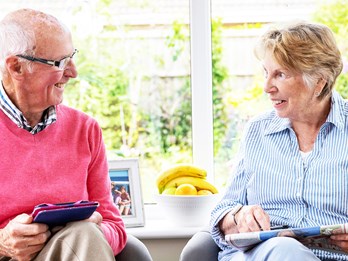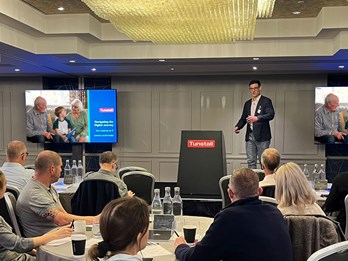Home Smart Home
Gavin Bashar, UK & Ireland Managing Director, Tunstall Healthcare explores the untapped potential of Connected Care & Health technology in the housing sector.
Home Smart Home
Aug 20, 2019

A survey by EY of 2,500 people released in April 2019 showed that 22% of households now own a voce-controlled digital assistant such as the Amazon Echo, double the amount in the previous year1. This kind of technology, along with smart thermostats, lighting and motion sensors, is becoming commonplace in British homes. However, not all housing providers recognise the role technology can play enhancing independence, providing effective support and sustaining tenancies.
Tunstall has been working with housing providers for over 60 years, providing systems that enable people to easily access help in the event of an emergency at home. However, although devices such as pull cords and pendants still have their place in providing reassurance and saving lives, the latest generation of technology doesn’t just help to manage risk, it provides preventative and, in some cases, predictive support.
Telecare systems have been available for many years and provide a simple and effective means of raising an alert with onsite staff or a specialist monitoring centre if they sense an event such as a fire, flood or carbon monoxide leak. They can also monitor for falls, or people with dementia leaving home and being unable to find their way back. A variety of GPS devices are also available that enable carers to locate someone away from home.
The latest systems offer much more intelligent enhancements to our lives. Big data can monitor patterns in an individual’s daily behaviour, giving insight that can enable efficient care planning as part of a strengths and assets-based approach. This predictive modelling can also alert on potential wellbeing issues. For example, motion sensors can detect increased use of the bathroom, which may be an early sign of a urinary tract infection. Conversely, decreasing use of the kitchen may indicate an individual is struggling to self-care.
Technology can also support mental wellbeing. For example, enabling the use of Wi-Fi across a development to support increased contact with friends and family, reducing social isolation, and giving access to online activities and services, such as games, shopping and utilities. It can also make communication with providers easier and more efficient, such as by using apps for easy repairs reporting, improving the tenant experience.
As BT has announced its intention to complete the move to a digital communications infrastructure by 2025, there is no better time for housing providers to consider the ways digital solutions can not only improve the quality and efficiency of the services they provide, but also deliver the homes their customers expect.



